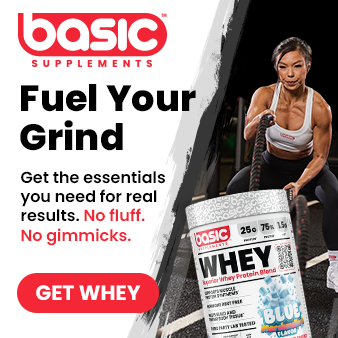Fats
The old-age opinion on fats are that they are bad, and you should avoid them at all costs. This is the farthest thing from the truth. In fact, fats provide a source of energy and help you build lean muscle. The trick is knowing which fats to consume and which ones to avoid.
Your daily intake of fats vary on your fitness goals and your overall activity levels. It can also depend on the type of foods you like to eat. If you generally like higher fat foods like bacon, your fat intake might be calculated more when determining your macros.
Are you always buying fat-free foods at the store? Think again. Fats are essential to a healthy life. The important part about fats is knowing which ones to consume and which ones to avoid. Fats play a big part in your cholesterol levels and prevention of certain illnesses. Let’s take a closer look at the different classifications of fats. Then we will provide you with a list of healthy sources of fats.
Saturated Fats
Goal: Limit
Foods that contain high amounts of Saturated Fats:
- Red Meat
- Seafood
- Dairy
Saturated fats are to be consumed in moderation. Too many saturated fats can increase your total cholesterol and your LDL (bad cholesterol). This can cause you to develop a variety of illnesses and diseases like high blood pressure, heart disease and type-2 diabetes.
Cholesterol
Goal: Limit
Foods that contain high amounts of Cholesterol:
- Seafood
- Eggs
Cholesterol contains HDL (High-density lipoprotein) cholesterol, also known as the “good cholesterol” and LDL (Low-density lipoprotein), also known as the “bad cholesterol.” You want to limit your intake of LDLs, bad cholesterol. High cholesterol levels can cause you to develop high blood pressure and heart disease.
Unsaturated Fats
Goal: Increase
Foods that contain high amounts of Unsaturated Fats:
- Olive Oil
- Seafood
- Nuts
Unsaturated fats contain three variations: Polyunsaturated, Monounsaturated and trans fats. The difference between Polyunsatured and Monounsaturated fats from trans fats are that trans fats are solid at room temperature, while the other two are not. You want to avoid trans fats, which we will talk about, but you want to increase your Monounsaturated and Polyunsaturated fats.
Polyunsaturated Fats
Goal: Increase
Foods that contain high amounts Polyunsaturated Fats:
- Nuts
- Seeds
- Fish
Polyunsaturated fats also contain Omega-3s and Omega-6s. Polyunsaturated fats are healthy for you. Polyunsaturated Fats help lower your total cholesterol levels and reduce the bad cholesterol, LDLs. Omega-3s and Omega-6s will be discussed next in this guide.
Omega-3s
Goal: Increase
Foods that contain high amounts of Omega-3s:
- Fish
- Soy
- Walnuts
Omega-3s are extremely important to your overall health. They are an essential fatty acid. This means our body cannot produce them, so we must obtain them from food sources or supplements. Omega-3s help fight inflammation, help control blood clotting and lower blood pressure. A lot of dietary supplement companies sell Omega-3 supplement, most popular is fish oil capsules.
Omega-6s
Goal: Maintain
Foods that contain high amounts Omega-6s:
- Vegetable Oils
Omega-6s are necessary for our bodies since they are an essential fatty acid, just like Omega-3s. A healthy balance of Omega-6s help with growth and brain functions.
Monounsaturated Fats
Goal: Increase
Foods that contain high amounts Monounsaturated Fats:
- Avocado
- Nuts
- Seeds
- Peanut Oil
- Olive Oil
- Canola Oil
Monounsaturated Fats raise your body’s HDL levels and lower your LDL levels. If you recall from before, HDL is “good cholesterol” and LDL is “bad cholesterol.”
Trans Fats
Goal: Eliminate
Foods that contain high amounts Trans Fats:
- Processed Foods
- Fast Food
- Deep Fried Foods
Trans fats increase total cholesterol and LDL while lowering HDL. Words to look for on labels include hydrogenated, par ally hydrogenated, or shortening.
Your best friend when it comes to understanding the fats you are consuming will be the nutritional label on the foods you eat. Take a minute to read over the ingredients. Although the total amount of fat a food item contains is important to your macros, you also want to look at what type of fats are making up that total amount of fat. A better understanding of fats will help improve your overall health.
The following is a list of foods that contain healthy fats that you can include in your macronutrient plan, along with their macronutrient profile.
Avocado
[/vc_column_text][image_with_animation image_url=”5083″ alignment=”center” animation=”None” box_shadow=”none” max_width=”100%”][vc_column_text]Weight: 100g
Total Fat: 15g
Saturated: 2.1g
Ployunsaturated: 1.8g
Monounsaturated: 10g
Coconut Oil
[/vc_column_text][image_with_animation image_url=”5088″ alignment=”center” animation=”None” box_shadow=”none” max_width=”100%”][vc_column_text]1 Tablspoon
Total Fat: 14g
Saturated: 12g
Ployunsaturated: 0.2g
Monounsaturated: 0.8g
Olive Oil
[/vc_column_text][image_with_animation image_url=”5084″ alignment=”center” animation=”None” box_shadow=”none” max_width=”100%”][vc_column_text]1 Tablespoon
Total Fat: 14g
Saturated: 1.9g
Ployunsaturated: 1.4g
Monounsaturated: 10g
Grilled Salmon
[/vc_column_text][image_with_animation image_url=”5087″ alignment=”center” animation=”None” box_shadow=”none” max_width=”100%”][vc_column_text] [/vc_column_text][/vc_column][vc_column column_padding=”no-extra-padding” column_padding_position=”all” background_color_opacity=”1″ background_hover_color_opacity=”1″ column_shadow=”none” width=”1/3″ tablet_text_alignment=”default” phone_text_alignment=”default” column_border_width=”none” column_border_style=”solid”][vc_column_text]Chia Seeds
[/vc_column_text][image_with_animation image_url=”5085″ alignment=”center” animation=”None” box_shadow=”none” max_width=”100%”][vc_column_text]Weight: 100g
Total Fat: 31g
Saturated: 3.3g
Ployunsaturated: 24g
Monounsaturated: 2.3g
Grilled Tuna
[/vc_column_text][image_with_animation image_url=”5086″ alignment=”center” animation=”None” box_shadow=”none” max_width=”100%”][vc_column_text]Weight: 3oz
Total Fat: 5g
Saturated: 1.4g
Ployunsaturated: 1.6g
Monounsaturated: 1.7g







